Books by Karin Bruwelheide

When a subterranean burial vault was discovered at the eighteenth-century Maryland residence of D... more When a subterranean burial vault was discovered at the eighteenth-century Maryland residence of Darnall’s Chance, an effort began to learn the identities and life histories of those inside the high-status crypt. Identi cation of the human remains as members of the residence’s rst family, while inferred based on burial location, remained only conjectural. Sparse records provided little insight into the elite family’s morbidity, mortality, and mortuary practices. Prolonged and excruciating illnesses of two family members, as expressed by conditions in the bones, were undocumented in the written record, as were the births and deaths of infants and children. An interdisciplinary investigation spanning two decades incorporating archaeology, osteology, chemistry, genetics, genealogy, and history was required to identify the remains, some by name, and establish their biological relatedness. This bioarchaeological approach offers information that augments primary source documents related to the family while adding to the larger skeletal record of the eighteenth century. It also provides evidence for the prominence of Lettice Lee Wardrop Thomson Sim, household matriarch, in sustaining and caring for her family. These details expand on the historical framework of women’s roles in familial relationships in both life and death.
Papers by Karin Bruwelheide
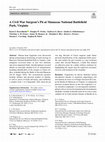
Historical Archaeology, Nov 28, 2023
Human bone fragments were discovered during archaeological monitoring of earth moving on Manassas... more Human bone fragments were discovered during archaeological monitoring of earth moving on Manassas National Battlefield Park in Virginia. Later mitigation recovered bones in situ-two skeletons and seven amputated limbs. Interdisciplinary research affords an unusually detailed level of interpretation, including identification of the remains as Union soldiers wounded during the Battle of Second Manassas (28-30 August 1862). The reconstructed narrative includes military and personal markers of identity, as well as causes of death and injury, and establishes a window from 1 to 6 September 1862 when the pit was dug. Records of Union surgeons make future personal identification of the amputated limbs possible and confirm the pit's location as a key treatment center after Second Manassas, a battle that marked an inflection point for combat military medicine by highlighting the urgent need for improved systematic recovery and treatment of the wounded. Resumen Fragmentos de huesos humanos fueron descubiertos durante el monitoreo arqueológico del movimiento de tierra en el Parque Nacional del Campo de Batalla de Manassas en Virginia. La mitigación posterior recuperó huesos in situ: dos esqueletos y siete miembros amputados. La investigación interdisciplinaria ofrece un nivel de interpretación inusualmente detallado, incluida la identificación de los restos como
Science
Few African Americans have been able to trace family lineages back to ancestors who died before t... more Few African Americans have been able to trace family lineages back to ancestors who died before the 1870 United States Census, the first in which all Black people were listed by name. We analyzed 27 individuals from Maryland’s Catoctin Furnace African American Cemetery (1774–1850), identifying 41,799 genetic relatives among consenting research participants in 23andMe, Inc.’s genetic database. One of the highest concentrations of close relatives is in Maryland, suggesting that descendants of the Catoctin individuals remain in the area. We find that many of the Catoctin individuals derived African ancestry from the Wolof or Kongo groups and European ancestry from Great Britain and Ireland. This study demonstrates the power of joint analysis of historical DNA and large datasets generated through direct-to-consumer ancestry testing.
Bioarchaeological Analyses and Bodies, 2018
Introduction 111 Background 113 The Burial Vault 114 Other Historical Burial Vault Studies 116 Th... more Introduction 111 Background 113 The Burial Vault 114 Other Historical Burial Vault Studies 116 The Human Remains 119 Naming the Past 134 Discussion 136 Conclusion 141 References 142
Osteological analysis of two South Churchyard burials excavated during Jamestown Rediscovery’s 19... more Osteological analysis of two South Churchyard burials excavated during Jamestown Rediscovery’s 1999 field season offered insight into the age, sex, ancestry, and pathology of these individuals. Burial 4 (JR316F) contained the remains of a male Euro-American, aged 50-59 years old at the time of his death. The skeletal remains of a 40-49 year old Euro-American female were uncovered in Burial 5 (JR320F). The skeletons also provided potential evidence for daily activities such as horseback riding, strenuous labor, and tobacco-pipe smoking.

A brick well containing human bones and artifacts dating to the mid-nineteenth century was discov... more A brick well containing human bones and artifacts dating to the mid-nineteenth century was discovered during construction on the Medical College of Virginia campus of Virginia Commonwealth University (VCU) in 1994. The commingled assemblage associates the well with the first years of operation of the Egyptian Building, opened in 1844 and built to house the Medical Department of Hampden-Sydney College, established in 1838. A 2011–2012 analysis of the human bones identifies a minimum of 44 adults (individuals 15 years and older) and 9 children (ages 14 years and younger) represented by at least 19 fairly intact bodies plus partial remains of an additional 34 individuals. Males and females are represented, and African and European ancestries are conveyed in the morphometric analysis of the crania. Patterned cuts indicating autopsy and dissection are present on several bones and identify the well as a repository for the disposal of cadavers used in medical teaching and training during t...
Society for Historical Archaeology, 2014
Society for Historical Archaeology, 2016
... Mary's City, ca. 1683. Photograph by Brittney Tatchell, Smithsonian Inst... more ... Mary's City, ca. 1683. Photograph by Brittney Tatchell, Smithsonian Institution. 2 Page 4. ... Hans-Dieter Sues, PhD Associate Director for Research and Collections National Museum of Natural History Smithsonian Institution 5 Page 7. and of the 6 Page 8. ...

Centro Journal, 2015
Positive identification of skeletonized remains is a challenge faced by forensic anthropologists ... more Positive identification of skeletonized remains is a challenge faced by forensic anthropologists in contemporary medico-legal investigations. Sometimes, these specialists are asked to examine historic remains with the intention of identifying specific individuals (Owsley et al. 2006; Teixeira 1985; Ubelaker 1996). Applying modern forensic investigative techniques to remains from the past can be challenging due to the frequent absence of detailed personal information useful for comparison with the skeletal record. Under the best of conditions, variable bone preservation or historic events can make the task even more difficult, requiring considerable effort to reconstruct even a partial skeleton.Such was the task requested of a commission of historians and scientists formed by the Puerto Rican government. The commission was asked to identify the remains of Ramon Power y Giralt, Puerto Rico's delegate to the 1812 Spanish Court of Cadiz and an important dignitary in that political b...
Society for Historical Archaeology, 2016
... Mary's City, ca. 1683. Photograph by Brittney Tatchell, Smithsonian Inst... more ... Mary's City, ca. 1683. Photograph by Brittney Tatchell, Smithsonian Institution. 2 Page 4. ... Hans-Dieter Sues, PhD Associate Director for Research and Collections National Museum of Natural History Smithsonian Institution 5 Page 7. and of the 6 Page 8. ...

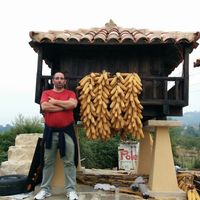
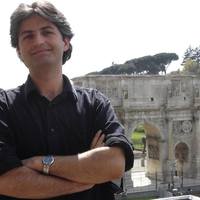
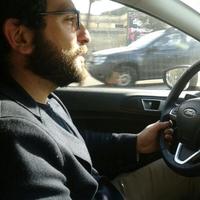


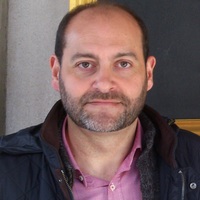


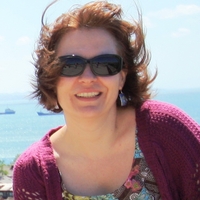
Uploads
Books by Karin Bruwelheide
Papers by Karin Bruwelheide